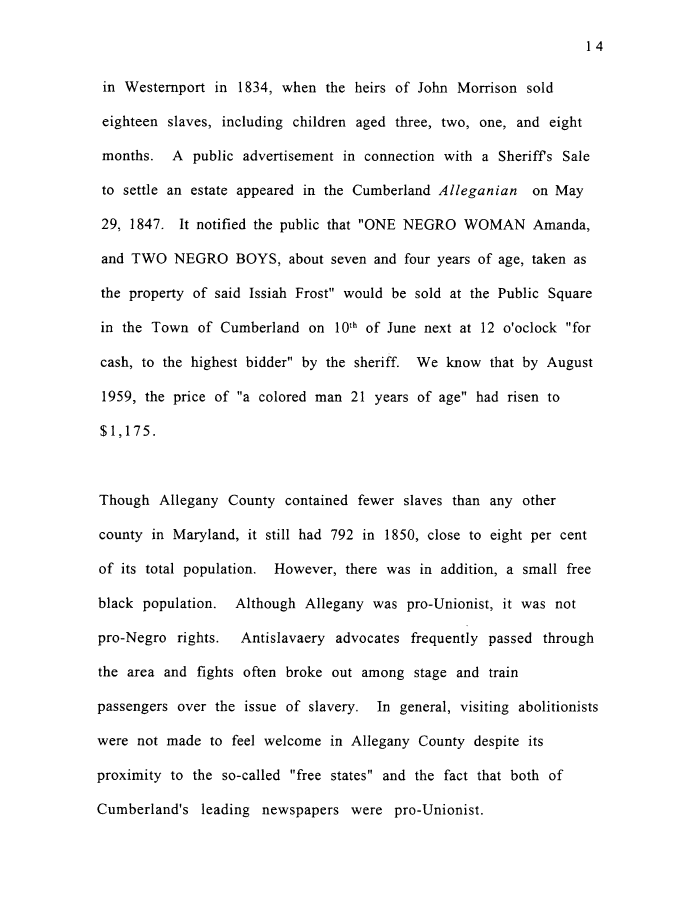 |
||||
|
TASK FORCE TO STUDY THE HISTORY AND LEGACY OF SLAVERY IN MARYLAND (Final Report) 1999/12/31 MdHR 991422 MdHR 991422, Image No: 23 Print image (43K) |
 |
||||
|
TASK FORCE TO STUDY THE HISTORY AND LEGACY OF SLAVERY IN MARYLAND (Final Report) 1999/12/31 MdHR 991422 MdHR 991422, Image No: 23 Print image (43K) |
| 14 in Westernport in 1834, when the heirs of John Morrison sold eighteen slaves, including children aged three, two, one, and eight months. A public advertisement in connection with a Sheriffs Sale to settle an estate appeared in the Cumberland Alleganian on May 29, 1847. It notified the public that "ONE NEGRO WOMAN Amanda, and TWO NEGRO BOYS, about seven and four years of age, taken as the property of said Issiah Frost" would be sold at the Public Square in the Town of Cumberland on 10th of June next at 12 o'oclock "for cash, to the highest bidder" by the sheriff. We know that by August 1959, the price of "a colored man 21 years of age" had risen to $1,175. Though Allegany County contained fewer slaves than any other county in Maryland, it still had 792 in 1850, close to eight per cent of its total population. However, there was in addition, a small free black population. Although Allegany was pro-Unionist, it was not pro-Negro rights. Antislavaery advocates frequently passed through the area and fights often broke out among stage and train passengers over the issue of slavery. In general, visiting abolitionists were not made to feel welcome in Allegany County despite its proximity to the so-called "free states" and the fact that both of Cumberland's leading newspapers were pro-Unionist. |